The dream of any landscape photographer is to go out and catch the essence of all of his or her surroundings, preferably in one image. So we go “wider” and wider. Wide-angle lenses are getting more abundant in the photography closet and we are never happy with the lenses we have.
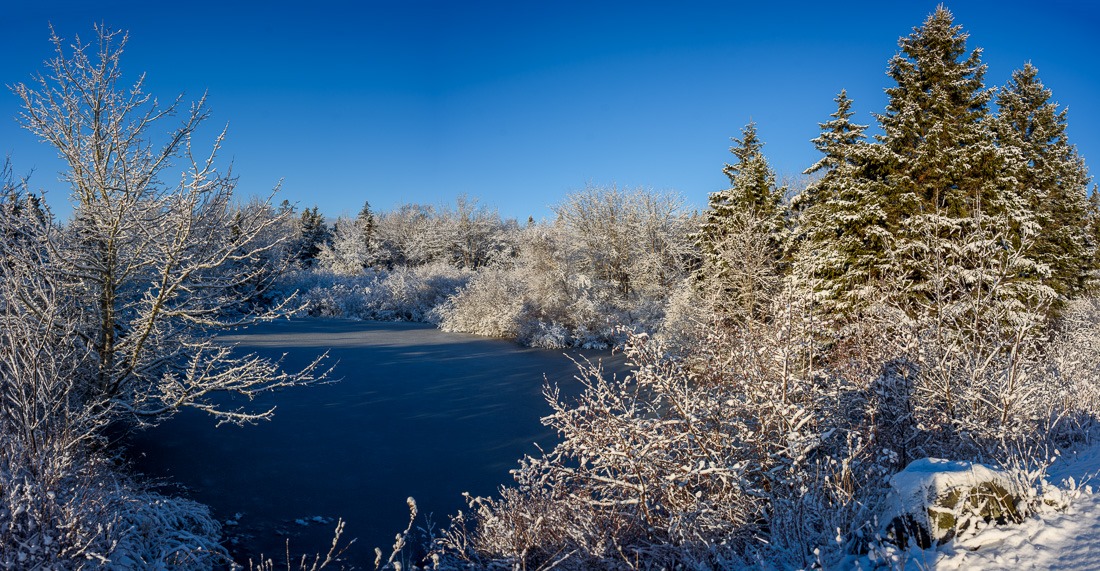
When I had a Nikon D7100, the widest lens I had was a Sigma 10-20mm. It looked great, it was a good lens until it encountered a rocky path. The next was a Tamron 11-16mm. It is still very good, but “not as wide”.
You start to get the idea by now. Only the widest lenses would be just wide enough for what I wanted to convey in my images. But lens makers only go so far before you end up in the fish-eye type lenses with enormous distortion. For landscape photography, that is not an option.
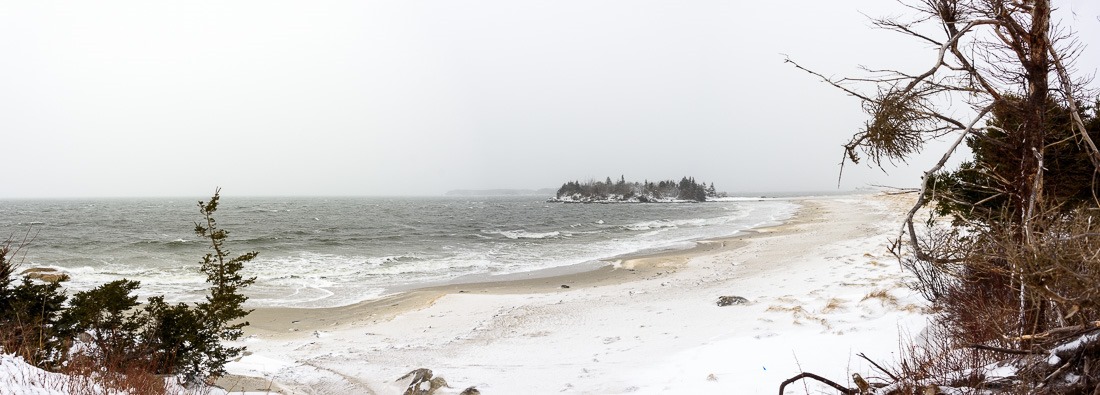
Carter’s Beach, NS
So I decided on the next logical step: take multiple pictures in sequence and stitch them together in a program capable of doing just that. Only to encounter other problems with those programs like Microsoft ICE (Image Composite Editor). At the time it only accepted certain file formats and I was obviously shooting in a different format.
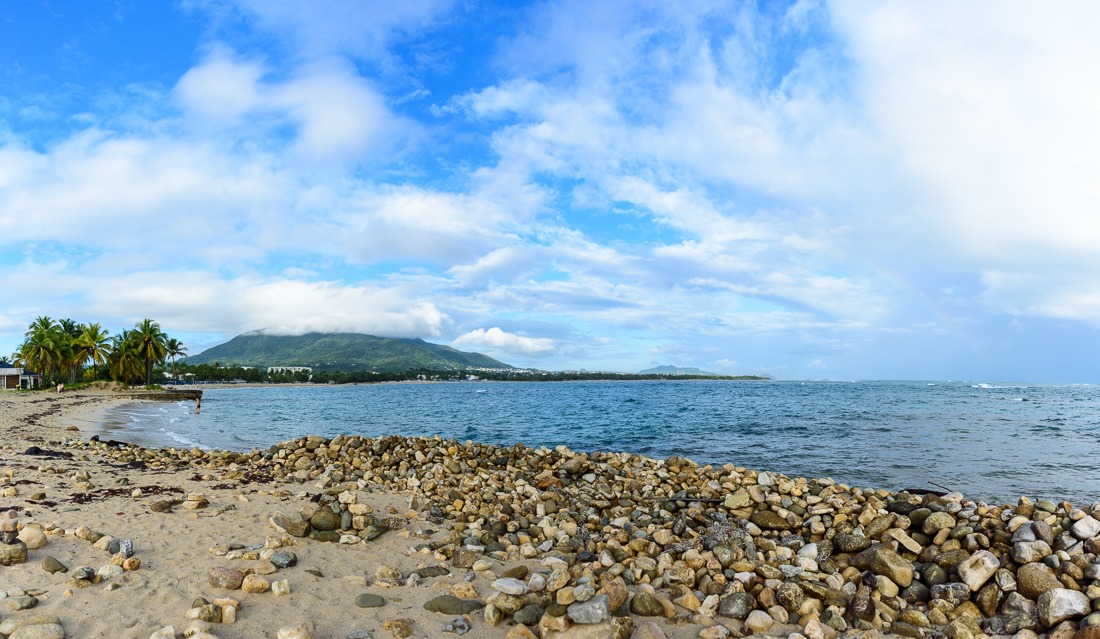
Isabel de Torres, Dominican Republic
Back in the 1980’s I had tried to shoot a mountain range in Norway. It had taken me 12 shots. I thought I had had the complete range in “one” photo. Only to be very disappointed when I finally got my prints back from the lab. None of the pics even lined up! Later, with panoramas of less width, I had a little more success, but it was still a hit-and-miss.

Lunenburg, NS
Then came programs on the market that were designed to do that, but those were limited in file format and maximum width of a panorama. There was always something. Until Adobe came up with the Panorama plugin/action for Photoshop and a little later a complete function in Lightroom Classic.
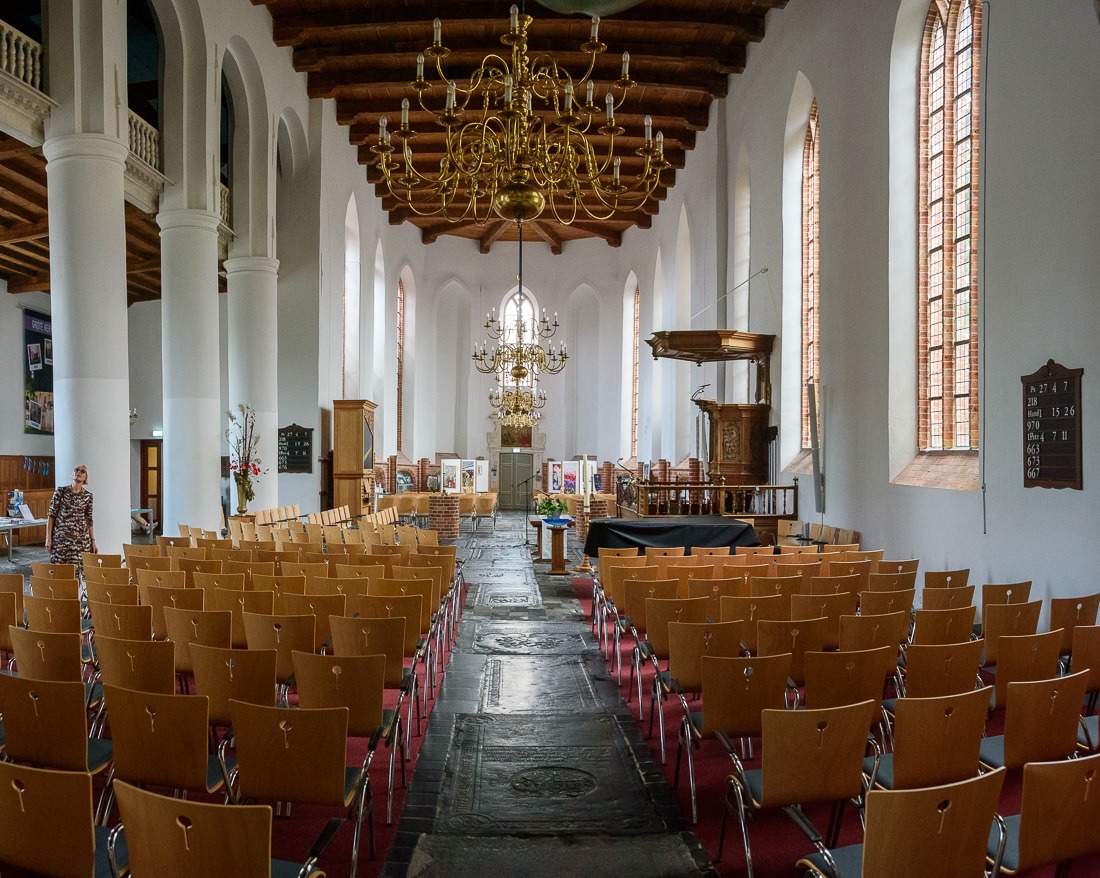
St Martinus Church, Dokkum, The Netherlands
For better panoramas, I will need to use a tripod, but that not always works in the middle of the night. My tripod does not have a bubble level to make it really horizontal, so over time the shots are wonkier and wonkier.
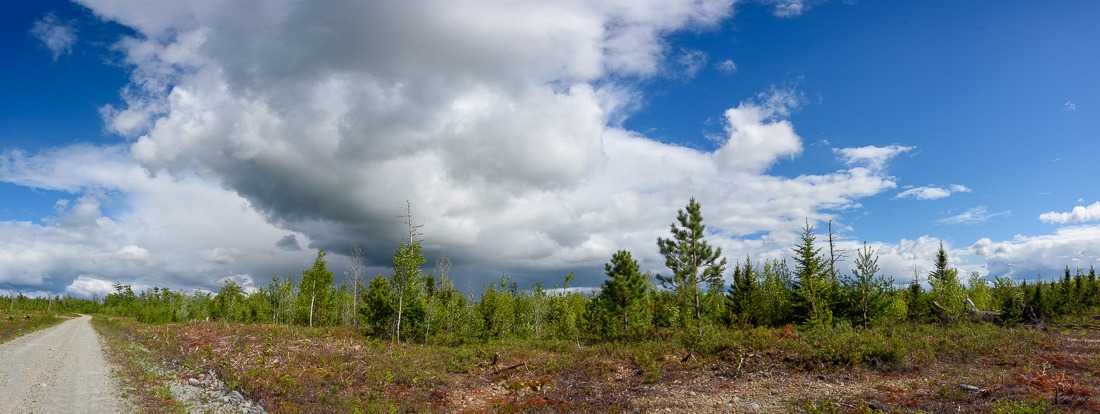
Nova Scotia wilderness
My only defence against wonky panoramas is to shoot a lot more than I need and cut my losses with the extra white space around the pictures that don’t fit.
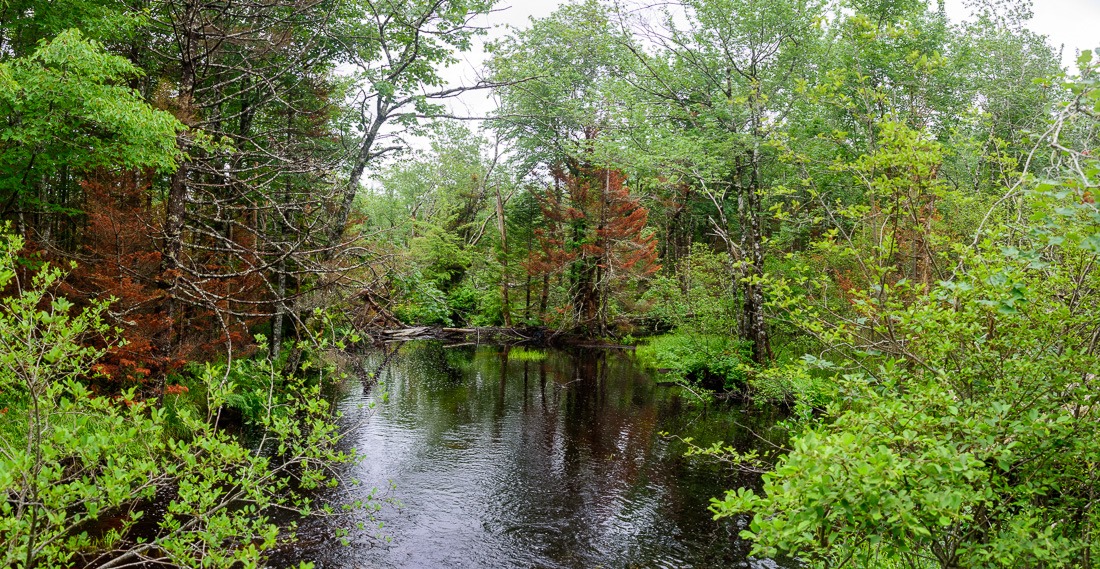
Nova Scotia wilderness
The pictures in this post are all panoramas, none of them could have been taken with conventional lenses. Most certainly not with the ones in my bag. Most are taken with my 28-300mm at the wide end, except for the picture above, that one was at 48mm, making it a panorama that is a bit further away, taking out elements around the edges that shouldn’t be there at all.
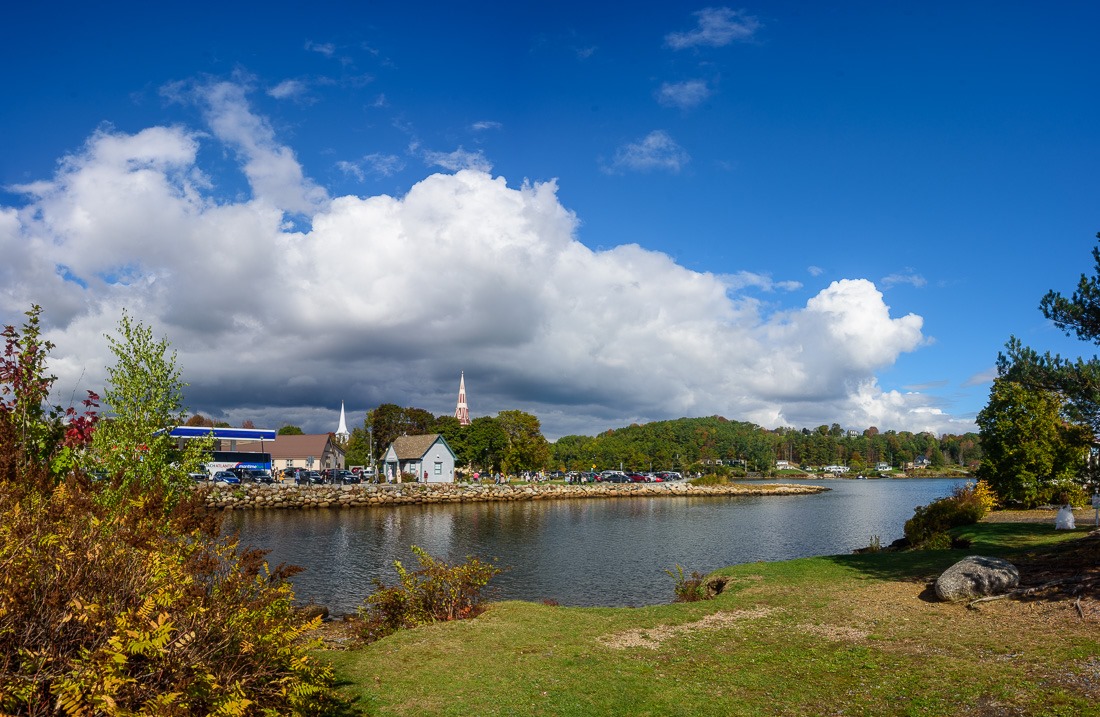
Mahone Bay, NS
Most of the panoramas were taken handheld, like this 6-shot panorama from Mahone Bay above. This is a 3+3 panorama, the whole sky had become extremely menacing. A few minutes later I was back in my car and the deluge began in earnest. Not the widest shot, but much more than I could capture in a single shot...
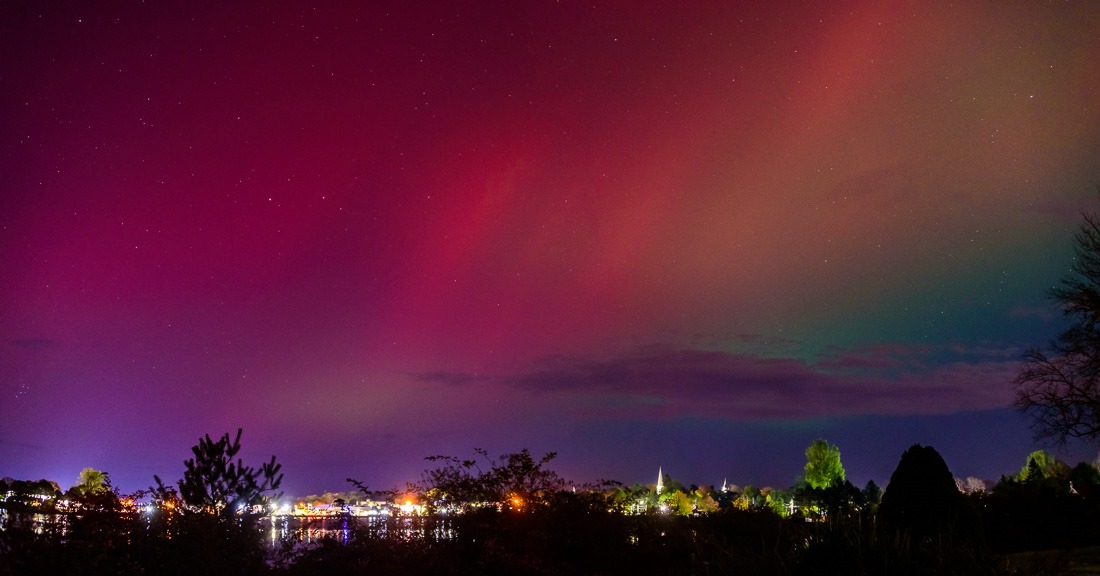
View over Liverpool, NS
And then there are the night skies. Here in Nova Scotia, auroras are rare, much rarer than in Manitoba, where I shot most of them. However, the past few days have been very active and the most extraordinary skies opened up for me at night. Normally I had to look for the darkest areas in the province (of Manitoba) to get a chance at a decent shot, but this event was much more powerful. So much, so that I could shoot the town lights at the same time as the aurora.
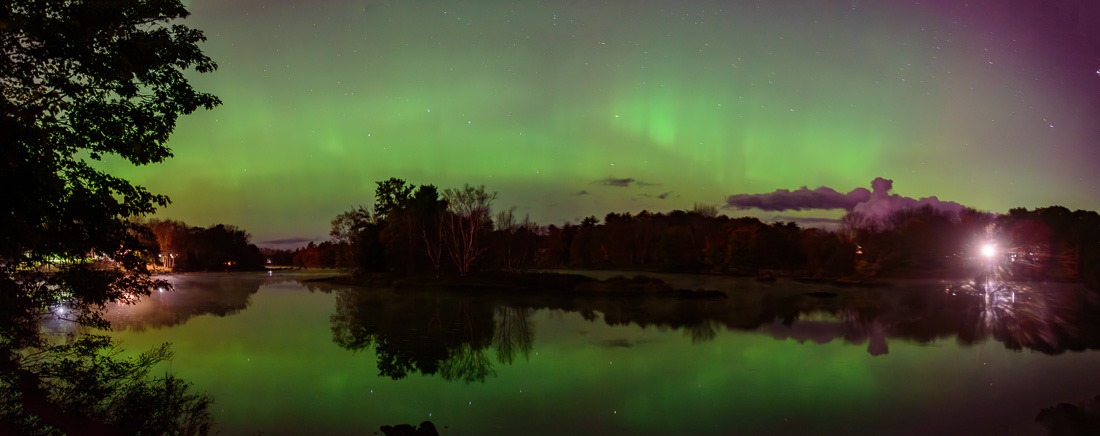
Lower altitude oxygen lighting at around 200km altitude
Going up the river a little bit, barely a kilometre away, the other, green, aurora was visible and needed another panorama. These nighttime panoramas were obviously shot on a tripod as the shutter speed for each individual picture was a few seconds. Way too much to hand-hold the camera and hope for a good shot.
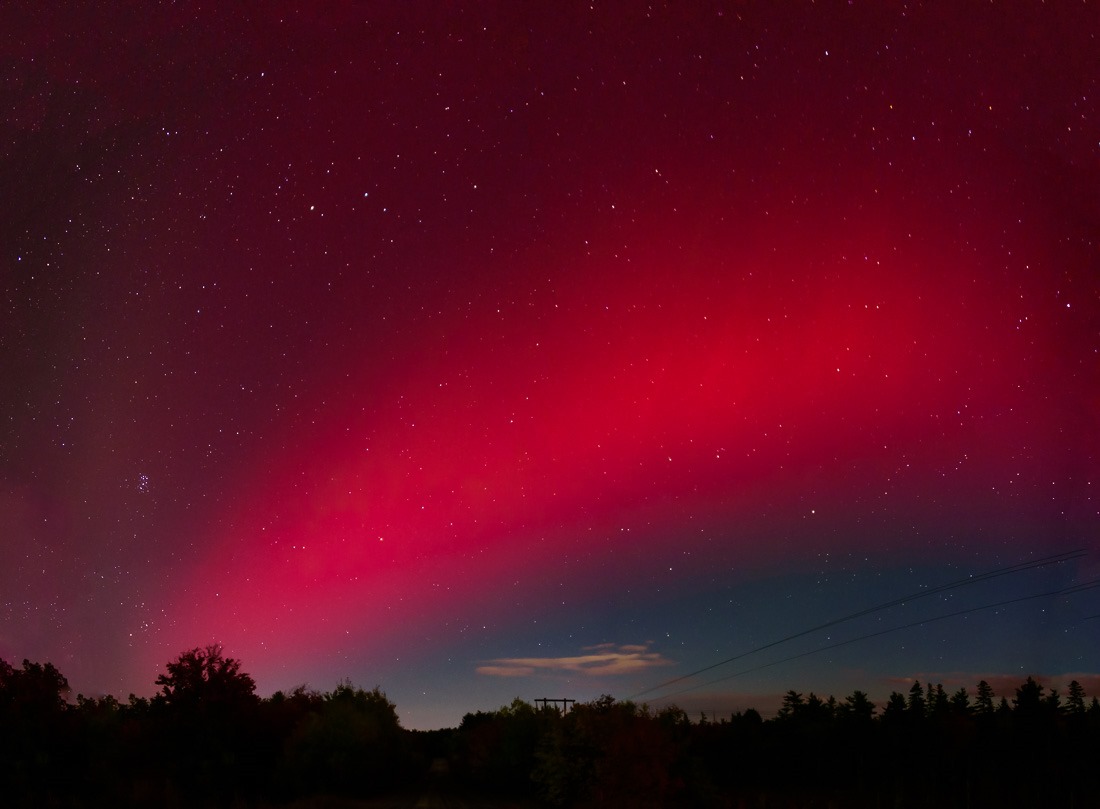
Violently ripped apart, atomic oxygen lights up red at around 250km altitude
The rarest aurora, the red one had to be visible when I was away from Manitoba. How cool is that? The above shot was a 12-shot panorama or a 4x3 picture. One way to tell if it is a panorama shot or a “normal” shot is with power lines. In a single shot, they remain fairly straight. In a panorama, or composited shot, the lines will make strange angles and curves.
All the shots here are from this year, all in sequence. And yes, that shot from the mountain was in March, my first time out from Canada in years. At least for a vacation, not for family business.
Until next time…
